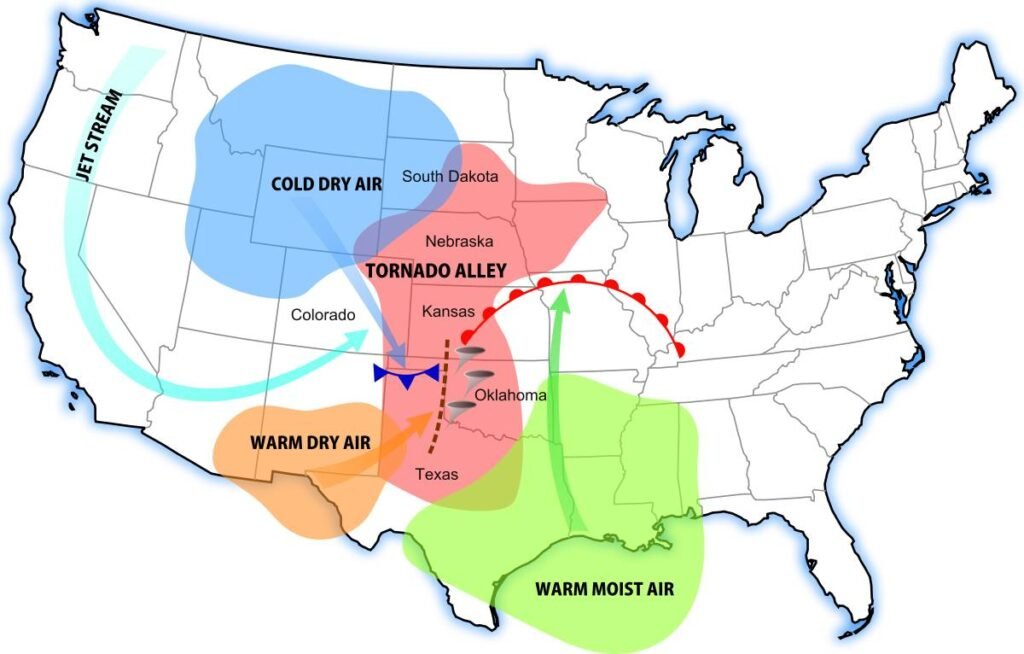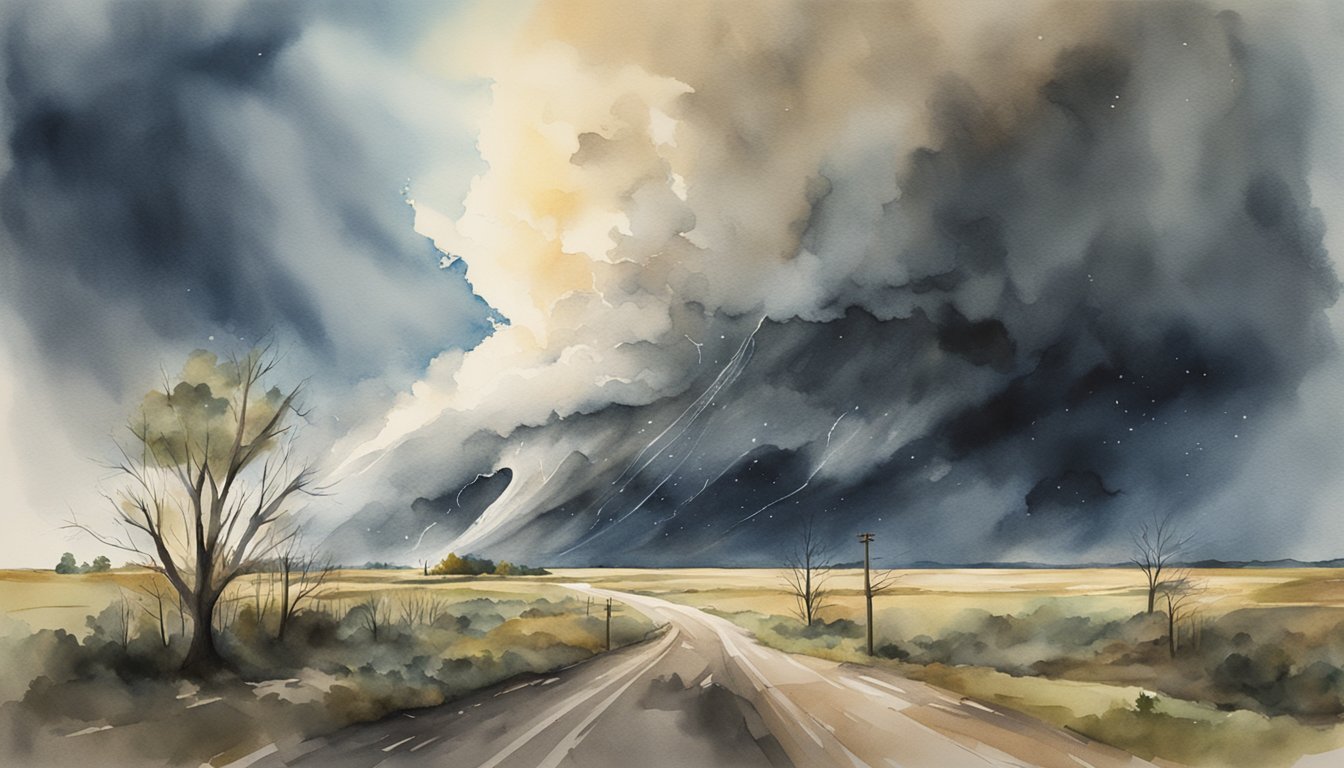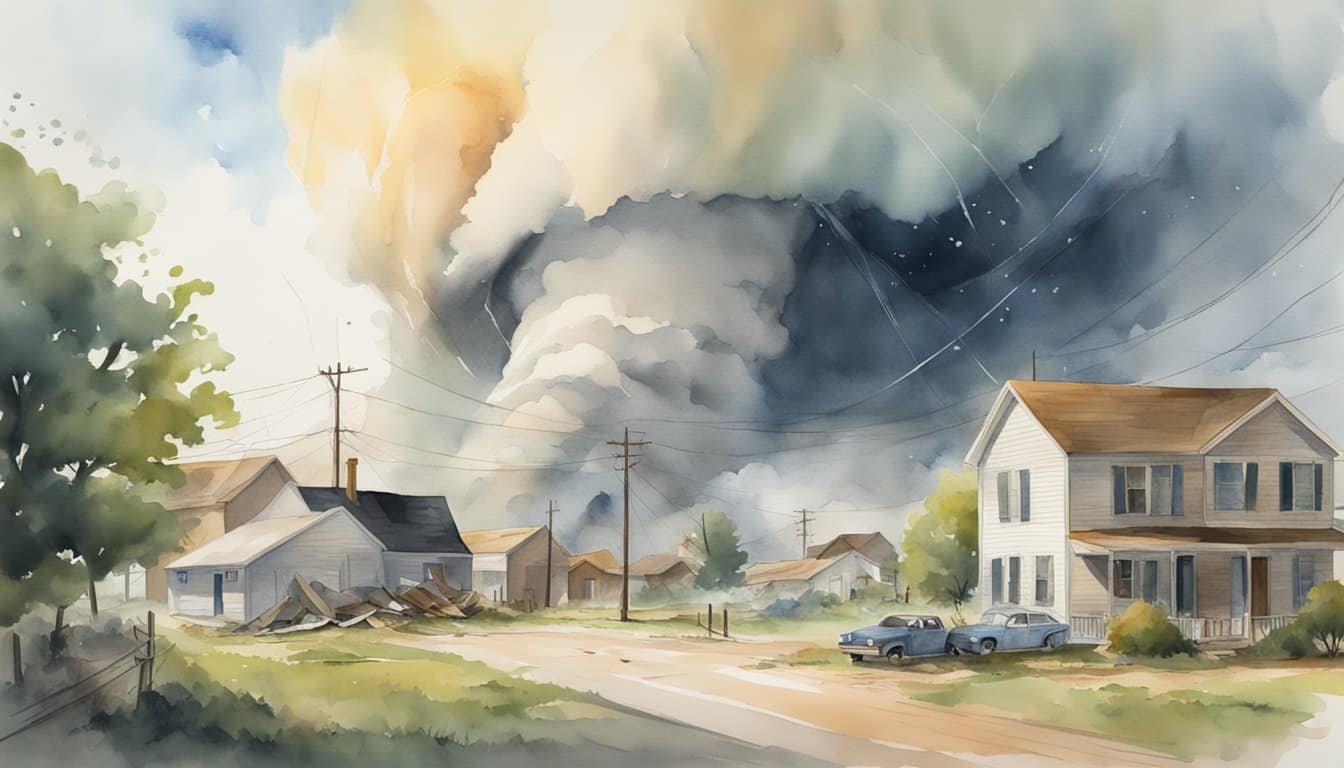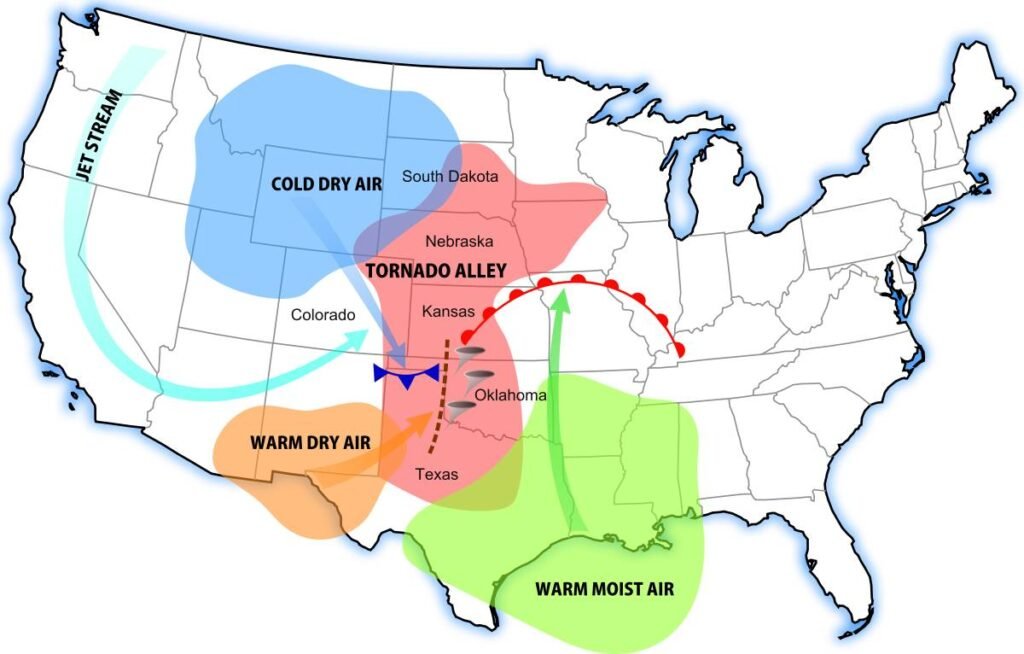Overview of Tornado Alley
Tornado Alley is a region famously known for frequent tornadoes, particularly due to its unique geographical and atmospheric conditions. From seasoned storm chasers to the merely curious, this zone draws wide attention for its extreme weather.

Geographic Scope and States Involved
Tornado Alley spans across the central United States, involving states known for their extensive flatlands. The primary states caught in this tempestuous embrace include Oklahoma, Kansas, and Texas, which form the heart of this region. Its reach often extends to parts of the Great Plains, a vast area of flat land that includes additional states, making it a breeding ground for powerful storms.
Historical Tornado Patterns
Over the years, Tornado Alley has been witness to dramatic and transformative tornado events. Historical data suggests a concentration of tornadoes in this region, influenced by the confluence of warm, moist air from the Gulf of Mexico and cool, dry air from the Rocky Mountains. The American Meteorological Society has chronicled these patterns, underscoring the area’s susceptibility to severe weather phenomena.
Defining Tornado Alley Boundaries
Determining the exact boundaries of Tornado Alley can be challenging. Traditional definitions include the central plains states but research, like the analysis of Tornado Alley and Dixie Alley, indicates shifts in tornado occurrences over time. Boundaries are dynamic, with newer studies proposing an eastward spread into the so-called Dixie Alley. While there isn’t a universally agreed-upon map, it’s generally accepted that the core of Tornado Alley lies where tornadoes have historically been most frequent and severe.
Tornado Formation and Tracking

Tornadoes are one of nature’s most powerful and unpredictable severe weather events. This section delves into the complexities of how tornadoes form and the efforts to track these phenomena to ensure public safety.
Understanding How Tornadoes Form
Tornadoes arise from thunderstorms, specifically supercells, which are the largest and most severe form. For a tornado to form, a unique blend of atmospheric conditions is required, including abundant moisture, usually from the Gulf of Mexico, and wind shear, which is the change in wind speed and direction with height. When warm, moist air is lifted and interacts with cooler air, it can create instability in the atmosphere. This instability, when combined with wind shear, creates a rotating updraft known as a mesocyclone. If this mesocyclone tightens and descends, it can touch down as a tornado.
Role of National Weather Organizations
Two key players in tornado tracking are the National Weather Service (NWS) and the National Oceanic and Atmospheric Administration (NOAA). These organizations use advanced radar, satellites, and other technologies to monitor weather conditions that may lead to tornado formation. Meteorology experts analyze the data to predict severe weather events. Upon identifying a potential tornado threat, these organizations can issue warnings to give residents time to find safety. The ongoing research into how climate change might be affecting tornado patterns and intensity is also a critical component of their work, aiming to adapt their tracking and prediction models to save lives and mitigate property damage.
Impact of Tornadoes and Safety Measures

Exploring the severe impacts of tornadoes and the critical importance of safety measures is essential for those residing in high-risk areas, especially as extreme weather events become more prevalent.
Tornado-Induced Damage and Fatalities
Tornadoes are among the most destructive natural phenomena, with their ability to cause significant damage and result in fatalities. The Enhanced Fujita Scale categorizes tornadoes based on the severity of the destruction they cause, ranging from EF0, which includes light damage, to EF5, which signifies incredible devastation. Historically, regions within Tornado Alley have seen extensive damage to infrastructure, especially to mobile homes which are particularly vulnerable due to their lack of stable foundations. Fatalities often result from flying debris and the collapse of structures; tragically, people caught without adequate shelter are at great risk during these extreme weather events.
Appropriate Safety and Preparedness Plans
Preparation and planning are vital for survival during tornado season. Safety plans catered to tornado risks emphasize finding a sturdy structure with an interior room for shelter. For individuals in mobile homes or without access to sturdy buildings, community shelters or pre-determined safe locations provide life-saving alternatives. An essential element in preparedness is awareness: staying informed through weather updates and investing in a weather radio can significantly enhance one’s reaction time when tornadoes threaten an area. Additionally, engaging in tornado drills and having an emergency kit ready are proactive steps that can greatly reduce the risk of injury or death during these unpredictable and fatal storms.

